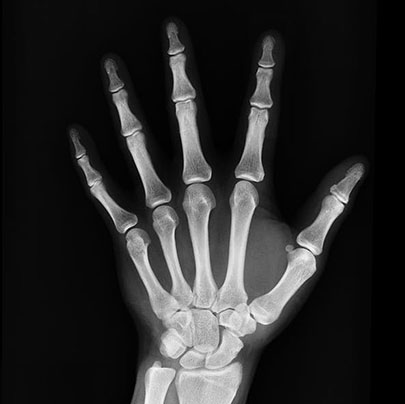Bones are living tissues changing constantly with the formation of new bones and loss of old bones throughout our lives. To remain mobile and independent we need to keep our bones healthy by protecting them from disease
Bones continue to grow in strength until the age of about 35 years, when old bones start to be lost at a faster rate than new bones can be formed to replace them. In some men, and more frequently women, this bone-loss is very severe. Their bones become weak, fragile and liable to break easily. This condition is known as osteoporosis. We now know how to protect the skeleton from this disease and maintain strong bones.
AVOIDING FRACTURES
One in four women and one in eight men over 60 years of age suffers a fracture due to osteoporosis. Bones at the highest risk of fracture are the hip, spine and wrist. Women are at a much higher risk because during and after the menopause they experience rapid bone-loss following reduction in female hormone oestrogen.
Bone-loss at this stage can be prevented by hormone replacement therapy. Apart from causing pain, fractures can make independent living difficult and may cause long-term problems with mobility. We are not certain about the exact number of Indians having osteoporosis.
In view of the general poor nutritional status and faulty lifestyles it is expected that the number may be very high. There are some simple measures one can take to prevent fractures whatever the age.

As you grow older, you are more likely to have a fall; so it is important to take a look at your home to make it as safe as possible. Some simple, practical steps you could take are the following:
Adequate intake of calcium and vitamin D is essential to maintain bone health, particularly as you grow older. The rich sources of calcium and vitamin D are: milk and milk products, beans, spinach, nuts and dried fruits. To ensure an assured supply of vitamin D and calcium, older people can consume calcium tablets available in the market: 500 mg for men and 1000 mg for women.
HEALTHY LIFESTYLE
If you have suffered a fracture or have developed backache, loss of height or a stoop, you may have fragile bones or osteoporosis. Osteoporosis is treatable. Itis better to talk to your doctor to be assessed for the condition and advice on suitable treatment which are available today.